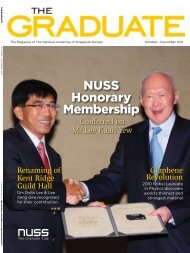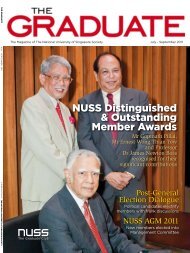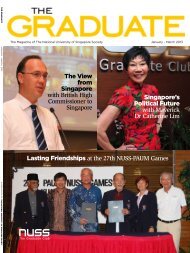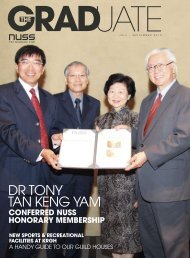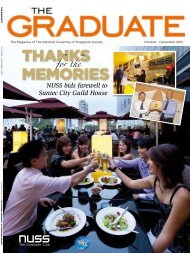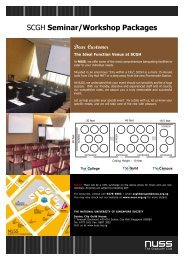Ben Cao GanG Mu - NUSS
Ben Cao GanG Mu - NUSS
Ben Cao GanG Mu - NUSS
You also want an ePaper? Increase the reach of your titles
YUMPU automatically turns print PDFs into web optimized ePapers that Google loves.
and sand wrapped in animal skin or bark could reduce pain.<br />
In turn, this led to the discovery of moxibustion treatment<br />
methods. As for acupuncture, it was deduced that it was<br />
discovered in their process of using stone instruments.<br />
Whether these theories are accurate, it is quite certain that<br />
the use of medical tools dates back well into the Stone Age.<br />
This is because, when written history began, much has<br />
already been known about Chinese Medicine. The advanced<br />
knowledge that were recorded in the first medical books<br />
suggests that there was a great deal of medical development<br />
before 2500 BC. Particularly, in one entry, it was noted that<br />
Hua Tuo was using herbal anesthesia to conduct surgery in<br />
the second century AD.<br />
However, it was Li Shizhen (AD 1517-1593) who brought<br />
about the continued advent of TCM into the modern era.<br />
By writing <strong>Ben</strong> <strong>Cao</strong> Gang <strong>Mu</strong>, ‘the General Outlines and<br />
Divisions of Herbal Medicine’, he made it possible for people<br />
to track the past knowledge and cumulatively increased the<br />
wealth of knowledge in the area. Today, records of medicinal<br />
substances have grown threefold from 1,900 to nearly 6,000.<br />
An Overview – TCM Practices<br />
Tracing its roots from China thousands of years ago, it is<br />
natural that TCM is most established in the East Asian cities<br />
with heavy Chinese influences, such as Hong Kong, Taiwan,<br />
and Singapore.<br />
Since then, TCM practices have evolved substantially.<br />
Today, TCM is more than just Chinese herbal medicine<br />
(Zhong Yao), moxibustion (Jiu) and acupuncture (Zhen Jiu), it<br />
includes dietary therapy and Shiatsu massage. Its combined<br />
therapeutic effects with Qigong and Taiji are also very much<br />
drawn upon from time to time.<br />
Basis of Theory<br />
In theory, TCM is a method of healing and strengthening the<br />
body. It is rooted in the observation of nature, the cosmos<br />
and the human body. Underlying these are the major theories<br />
Yin Yang, the ‘Five Phases’, the human body ‘Channel<br />
system’, ‘Organ theory’ (Zang Fu), ‘Six Confirmations’ and<br />
‘Four Layers’.<br />
While these theories are derived very differently on varying<br />
grounds, the foundation principles of TCM are largely based<br />
on the concept that the human body is a whole universe<br />
in seeking balance. This universe consists of various<br />
interconnected systems that are constantly working to strike<br />
equilibrium in the body.<br />
Differences between TCM and Western Medicine<br />
The TCM approach is fundamentally different from that of<br />
Western Medicine. In TCM, the understanding of the human<br />
body is based on the holistic understanding of the universe<br />
as described in Taoism; medical treatment is based primarily<br />
on the diagnosis and differentiation of syndromes.<br />
inside<br />
sTory<br />
0




